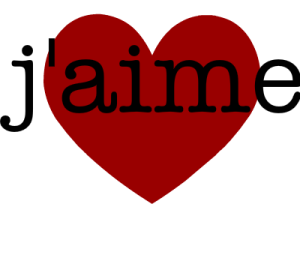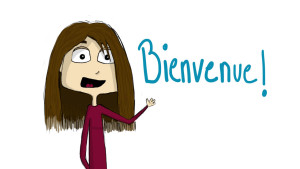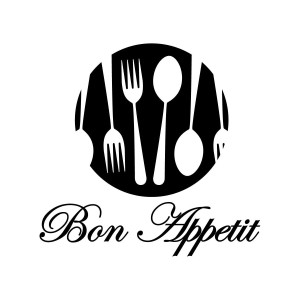Having spent the first few weeks of the school year addressing the NCSSFL-ACTFL Novice Low Can-Do Statements, I know that my students are ready to take their first big step on the proficiency path toward Novice Mid. I’ve chosen to focus on the theme of expressing personal preferences in this unit, as this topic is mentioned for each mode in the examples given for the Can-Do Statements. Based on my prior experience, I’m sure that these students will be excited to start sharing their own opinions of various activities, sports, music and school subjects. Here’s packet of activities that my students will complete during this unit (French-1-Unit-2-Packet (1)). (12/11/19: A reader generously shared this vocabulary document.)
In the first lesson, they will read an infographic about French leisure time activities. Click here for a Word document with the frames of the infographic.) This authentic text will introduce them to the important vocabulary that they will be using throughout this unit. After completing the comprehension guide, the students will interview several classmates by asking a series of yes/no questions incorporating vocabulary from the infographic. As a presentational writing task, they’ll write a letter to a prospective exchange student expressing their own preferences, as well as asking him/her some questions.
In the second lesson, the students will read a very simple online story about a girl playing basketball and complete a short comprehension guide. They’ll also watch their first Trotro cartoon. Although I’ve included the short answer questions I created in the packet, my students will instead take an online multiple choice quiz on Canvas, our learning management system. At the time I originally wrote this comprehension guide, I hadn’t yet begun using Canvas, but I’ve since discovered that I really like using it for listening comprehension activities. The multiple choice format provides valuable scaffolding and the program also provides immediate feedback to the students regarding the accuracy of their responses. For the interpersonal activity, the students will interview a partner about their preferences, and then complete a Venn diagram. They will then write 10 sentences comparing their preferences to their partner’s.
In the third lesson, the students will read another infographic and complete the corresponding comprehension guide as well as watch another Trotro cartoon. For the interpersonal task, they’ll play their first “Guess Who” game and then write sentences about one of the characters for their presentational writing task.
In the fourth lesson, the students will read an infographic about the Fete de la Musique. In addition to providing information about an important cultural event, this infographic will introduce the cognates used to describe different music genres. After another Trotro cartoon, they’ll ask a partner whether s/he likes a series of activities (represented by pictures). For this task, students will provide a more detailed response which includes a reason they like/dislike an activity.
In the fifth lesson, the students will read the first three pages of a document (originally found at: http://www4b.ac-lille.fr/~ecfg/download/questionnaire.pdf) that gives the results of a survey about French students’ preferences regarding school subjects. Although I haven’t prepared a comprehension guide, we’ll listen to and discuss this video as a class: https://www.youtube.com/watch?v=xi3xReaZlIQ .
In addition to the activities in this packet, I’ll project a few of the Tweets in this document at the beginning of each lesson to provide a hook. Based on the discussion from last week’s #langchat, I am also toying with the idea of having the students respond to these Tweets (or others that I will curate at the time) in order to provide a more authentic context for their new language skills.
The context for the IPA in this unit is finding a keypal. For the interpretive reading, the students will read posts to a keypal website. Although not closely integrated with the keypal theme, the students will watch an excerpt from the French film, Entre les Murs, for their interpretive listening task. The students will then write a post for the same website for their presentational writing task. (Students will be encouraged to actually post their response on the website.) The students will then interview a prospective keypal (classmate) about his/her preferences. Note: Due to logistics, I will be assessing the interpersonal task while the students are writing the presentational one.
Feel free to respond with any questions or comments you have about this unit!
Image Credit: https://sites.google.com/site/mesetnoslecons/home/classe-premiere/j-aime


 In conversations about Integrated Performance Assessments, my fellow teachers often share their concerns about using authentic texts with beginners. There seems to be a widespread belief that true beginners cannot derive meaning from texts created by native speakers for native speakers. I hope that these assessments, which will be implemented during the unit I shared in
In conversations about Integrated Performance Assessments, my fellow teachers often share their concerns about using authentic texts with beginners. There seems to be a widespread belief that true beginners cannot derive meaning from texts created by native speakers for native speakers. I hope that these assessments, which will be implemented during the unit I shared in 






